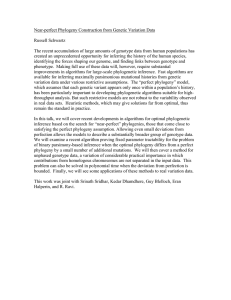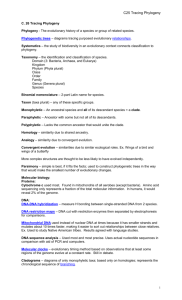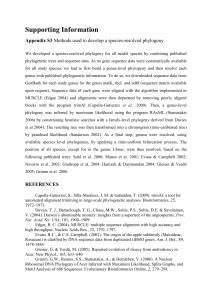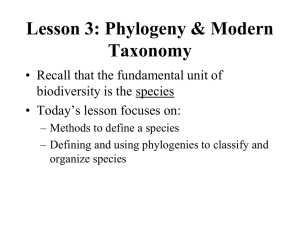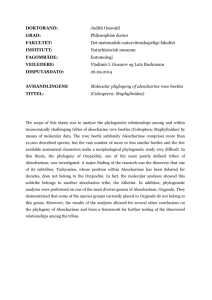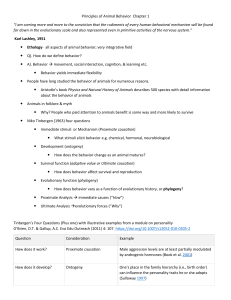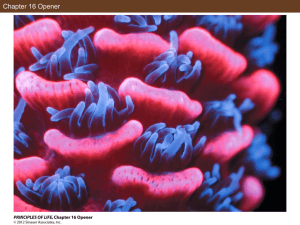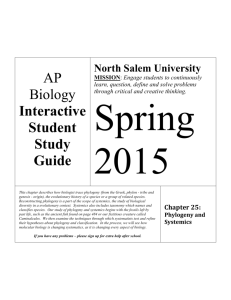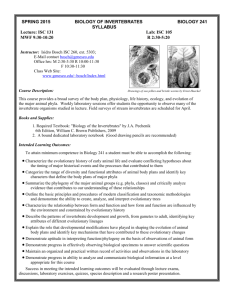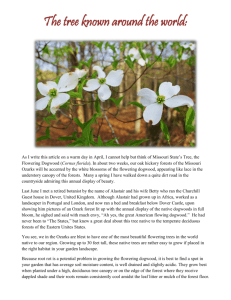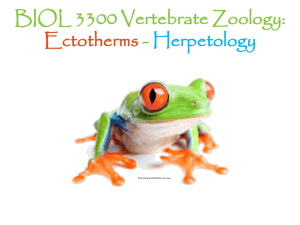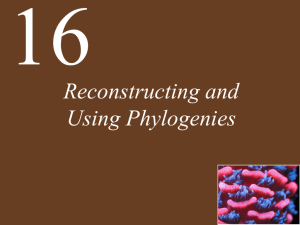PHYLOGENY AND EVOLUTION OF CORNALES: INTEGRATING
advertisement
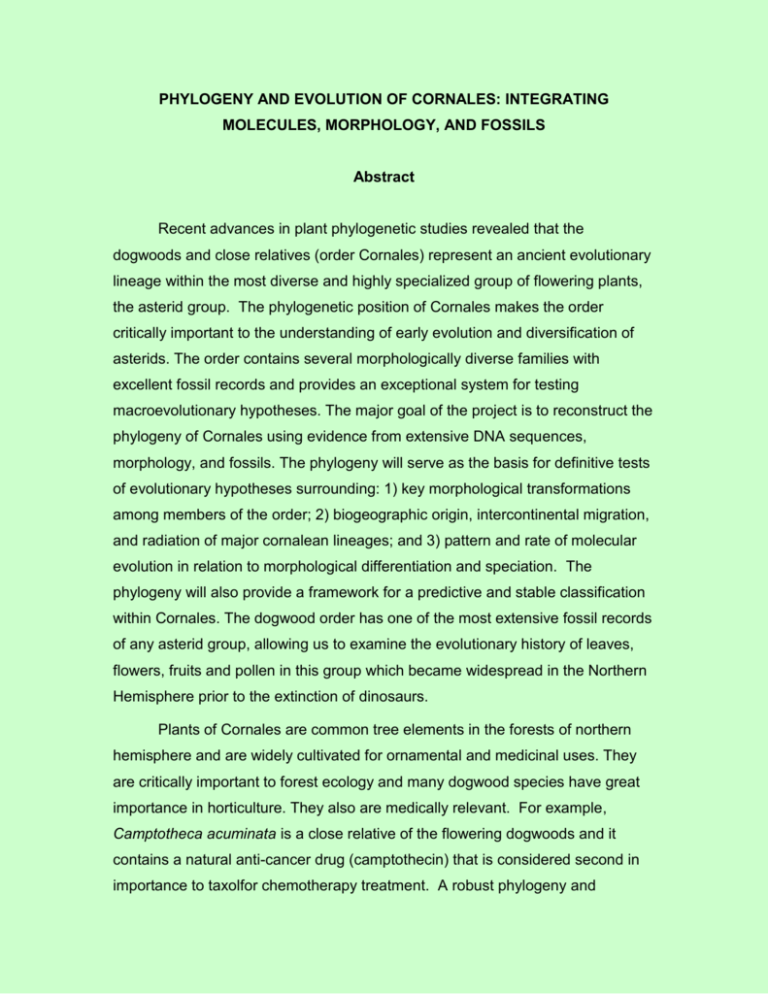
PHYLOGENY AND EVOLUTION OF CORNALES: INTEGRATING MOLECULES, MORPHOLOGY, AND FOSSILS Abstract Recent advances in plant phylogenetic studies revealed that the dogwoods and close relatives (order Cornales) represent an ancient evolutionary lineage within the most diverse and highly specialized group of flowering plants, the asterid group. The phylogenetic position of Cornales makes the order critically important to the understanding of early evolution and diversification of asterids. The order contains several morphologically diverse families with excellent fossil records and provides an exceptional system for testing macroevolutionary hypotheses. The major goal of the project is to reconstruct the phylogeny of Cornales using evidence from extensive DNA sequences, morphology, and fossils. The phylogeny will serve as the basis for definitive tests of evolutionary hypotheses surrounding: 1) key morphological transformations among members of the order; 2) biogeographic origin, intercontinental migration, and radiation of major cornalean lineages; and 3) pattern and rate of molecular evolution in relation to morphological differentiation and speciation. The phylogeny will also provide a framework for a predictive and stable classification within Cornales. The dogwood order has one of the most extensive fossil records of any asterid group, allowing us to examine the evolutionary history of leaves, flowers, fruits and pollen in this group which became widespread in the Northern Hemisphere prior to the extinction of dinosaurs. Plants of Cornales are common tree elements in the forests of northern hemisphere and are widely cultivated for ornamental and medicinal uses. They are critically important to forest ecology and many dogwood species have great importance in horticulture. They also are medically relevant. For example, Camptotheca acuminata is a close relative of the flowering dogwoods and it contains a natural anti-cancer drug (camptothecin) that is considered second in importance to taxolfor chemotherapy treatment. A robust phylogeny and predictive and stable classification of the order will provide a basis for directing horticultural, pharmacological, and other biological studies of these plants. In addition, the phylogeny will help guide sustainable uses of natural resources of the dogwoods and related plants. The extensive gene sequences to be collected in the study will contribute significantly to the existing molecular data pool of angiosperms and will facilitate comparative evolutionary studies at higher taxonomic levels. Our study will be one of the first to integrate paleobotanical data into the phylogenetic analysis of a group that also has many extant taxa taking advantage of both morphological and molecular characters. Furthermore, the project provides training for graduate and post-doctoral students, as well as undergraduate students in plant evolutionary biology and systematics. Finally, this project will add key information to the “Tree of Life” for flowering plants.




